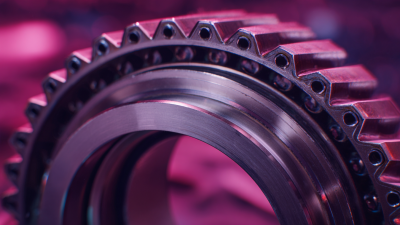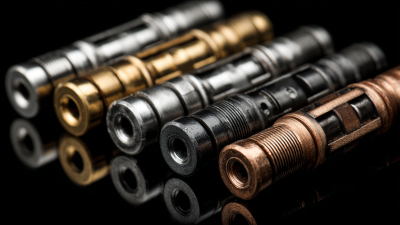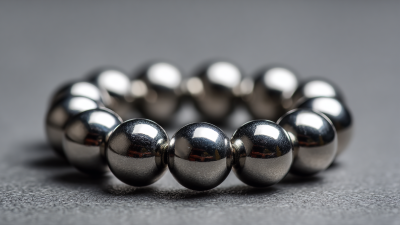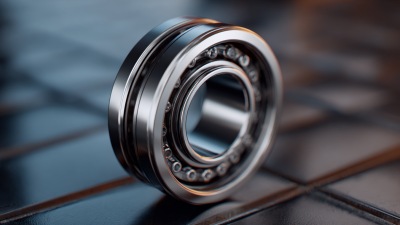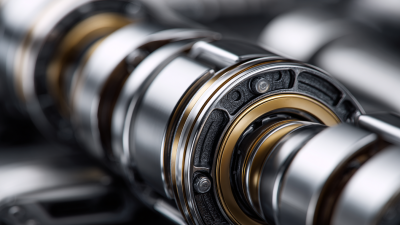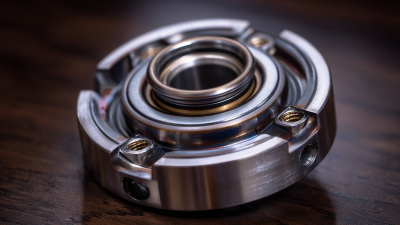How to Optimize Performance with Thrust Roller Bearings
Thrust roller bearings play a critical role in modern machinery, providing essential support for axial loads and ensuring smooth operation in various applications. According to a recent report by the International Journal of Mechanical Engineering, the global thrust roller bearing market is projected to grow at a CAGR of 5.2% from 2021 to 2028, driven by increasing demand in automotive and industrial sectors. Proper optimization of thrust roller bearings can significantly enhance performance, reduce energy consumption, and extend the lifespan of machinery. By understanding factors such as load capacity, speed ratings, and lubrication techniques, operators can make informed decisions to maximize the efficiency and reliability of their systems. This article will delve into effective strategies for optimizing performance with thrust roller bearings, ensuring that both manufacturers and users can achieve greater operational success.
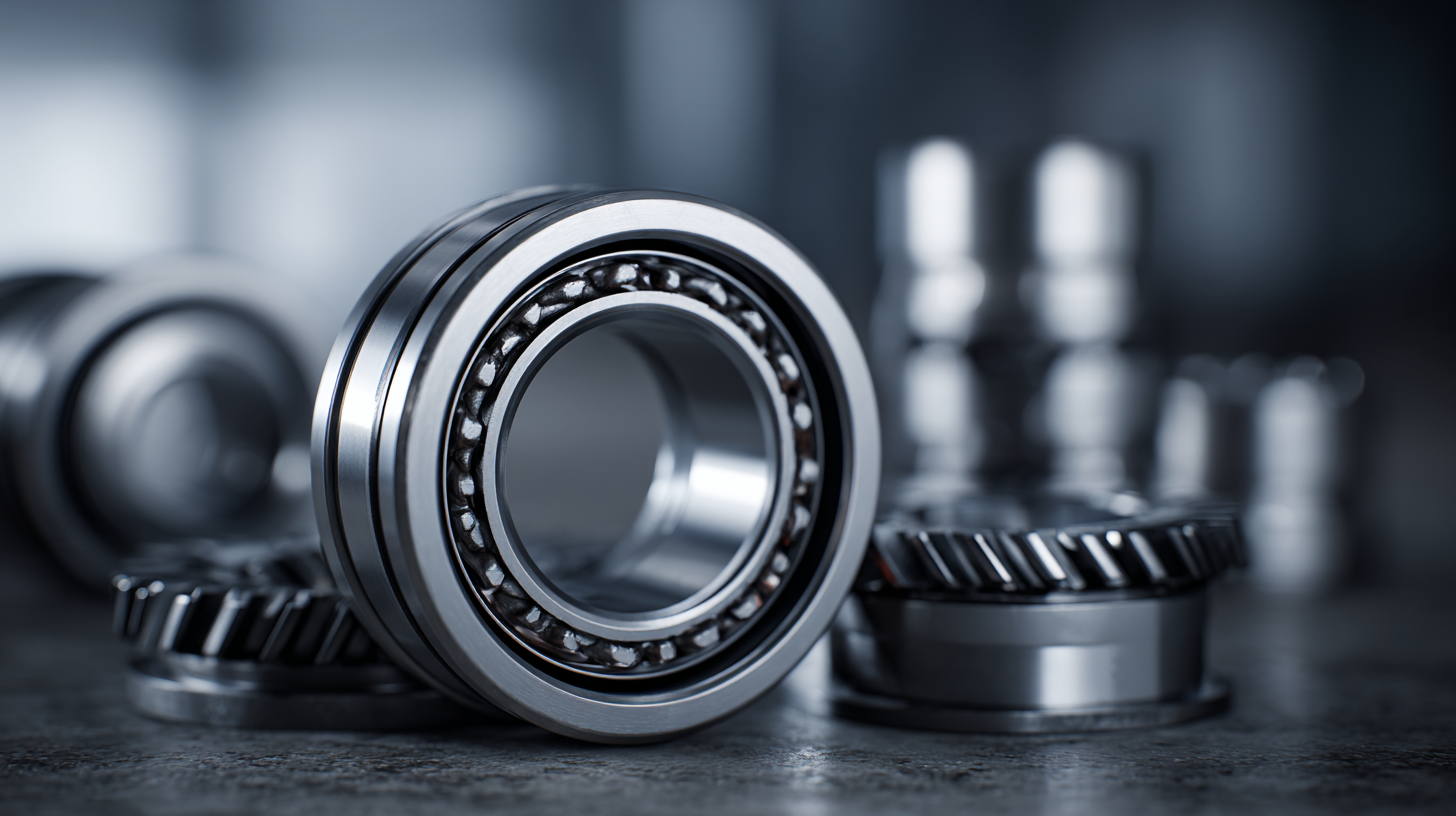
Understanding Thrust Roller Bearings and Their Applications
Thrust roller bearings are specialized components designed to accommodate axial loads efficiently. Unlike traditional roller bearings, which are optimized for radial loads, thrust roller bearings are specifically engineered to handle forces acting parallel to the shaft. This unique capability makes them an essential choice for applications that require high thrust load capacity, such as in automotive, aerospace, and industrial machinery.
Understanding the various applications of thrust roller bearings is crucial for optimizing their performance. These bearings excel in scenarios where space is limited and heavy axial loads are prevalent, such as in gearboxes, clutches, and marine propellers. Their design enables smooth rotation and reduced friction, which contributes to enhanced energy efficiency and prolonged equipment lifespan. By selecting the appropriate type of thrust roller bearing for a specific application, engineers can ensure reliability and optimal performance in demanding environments.
How to Optimize Performance with Thrust Roller Bearings - Understanding Thrust Roller Bearings and Their Applications
| Bearing Type |
Load Capacity (kN) |
Operating Speed (RPM) |
Material |
Applications |
| Cylindrical Thrust Roller Bearing |
200 |
1500 |
Steel |
Marine Propulsion Systems |
| Spherical Thrust Roller Bearing |
250 |
1200 |
Steel and Bronze |
Heavy Machinery |
| Needle Thrust Roller Bearing |
150 |
1800 |
Aluminum |
Automotive Applications |
| Tapered Thrust Roller Bearing |
300 |
1000 |
Chrome Steel |
Industrial Gearboxes |
Key Factors Influencing Thrust Roller Bearing Performance
Thrust roller bearings play a critical role in various industrial applications, particularly in machinery that experiences axial loads. The performance of these bearings is influenced by several key factors, including load capacity, lubrication, and material selection. According to a report by the National Lubricating Grease Institute, proper lubrication can enhance the bearing life by as much as 40%, significantly reducing friction and wear over time. This has been evidenced in applications such as vertical pumps and marine gearboxes, where optimized lubrication strategies can lead to a substantial increase in operational efficiency.
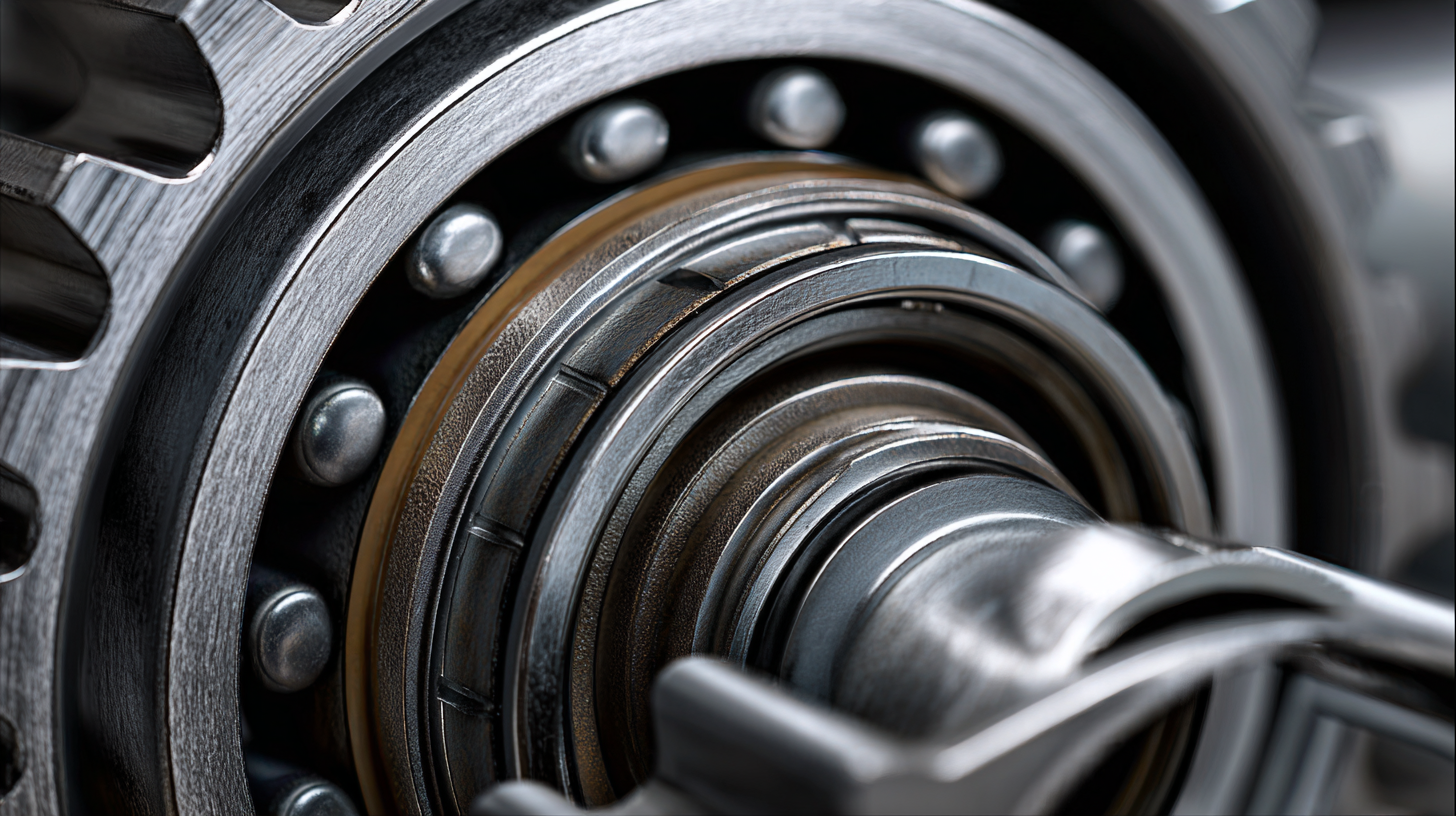
Another crucial factor is the bearing’s design and construction materials. High-quality bearing steel, often alloyed with elements like chromium, can increase hardness and resistance to pitting and fatigue. A study published by the American Society of Mechanical Engineers indicated that using bearings made from advanced materials can improve load-bearing capacities by 20% compared to standard materials, which is vital in high-load applications. Additionally, the precision in manufacturing processes ensures tighter tolerances, minimizing misalignment and enhancing the bearing's overall performance. Consequently, selecting the right combination of these factors is essential for maximizing the efficiency and longevity of thrust roller bearings in any industrial setting.
Techniques for Proper Installation of Thrust Roller Bearings
Proper installation of thrust roller bearings is crucial for optimizing performance and minimizing operational issues. As highlighted in recent studies, precise geometric alignment significantly impacts the bearing's efficiency and lifespan. For instance, the evaluation and correction methods for geometric errors in thrust bearings demonstrate that even minor discrepancies in perpendicularity can lead to substantial reductions in performance and premature wear. Aligning the thrust surfaces accurately ensures that the load distribution across the bearing is optimized, which is essential for reliable operation.
Moreover, advancements in condition monitoring techniques, such as the use of electrical impedance, provide valuable data on the immediate state of thrust roller bearings. This allows for in situ measurements with reduced uncertainties, enhancing the reliability of maintenance practices. Implementing these innovative monitoring strategies not only promotes cost-efficiency but also aligns with the industry's growing demand for robust data in smart manufacturing environments. As Industry 4.0 continues to evolve, the integration of real-time condition monitoring into thrust roller bearing management will play a pivotal role in extending service life and improving operational performance.
Performance Optimization of Thrust Roller Bearings
The chart above illustrates key performance metrics for thrust roller bearings, including Load Capacity, Operating Temperature, Speed, and Installation Precision. These factors are critical for ensuring optimal performance in various applications.
Regular Maintenance Practices to Enhance Bearing Longevity
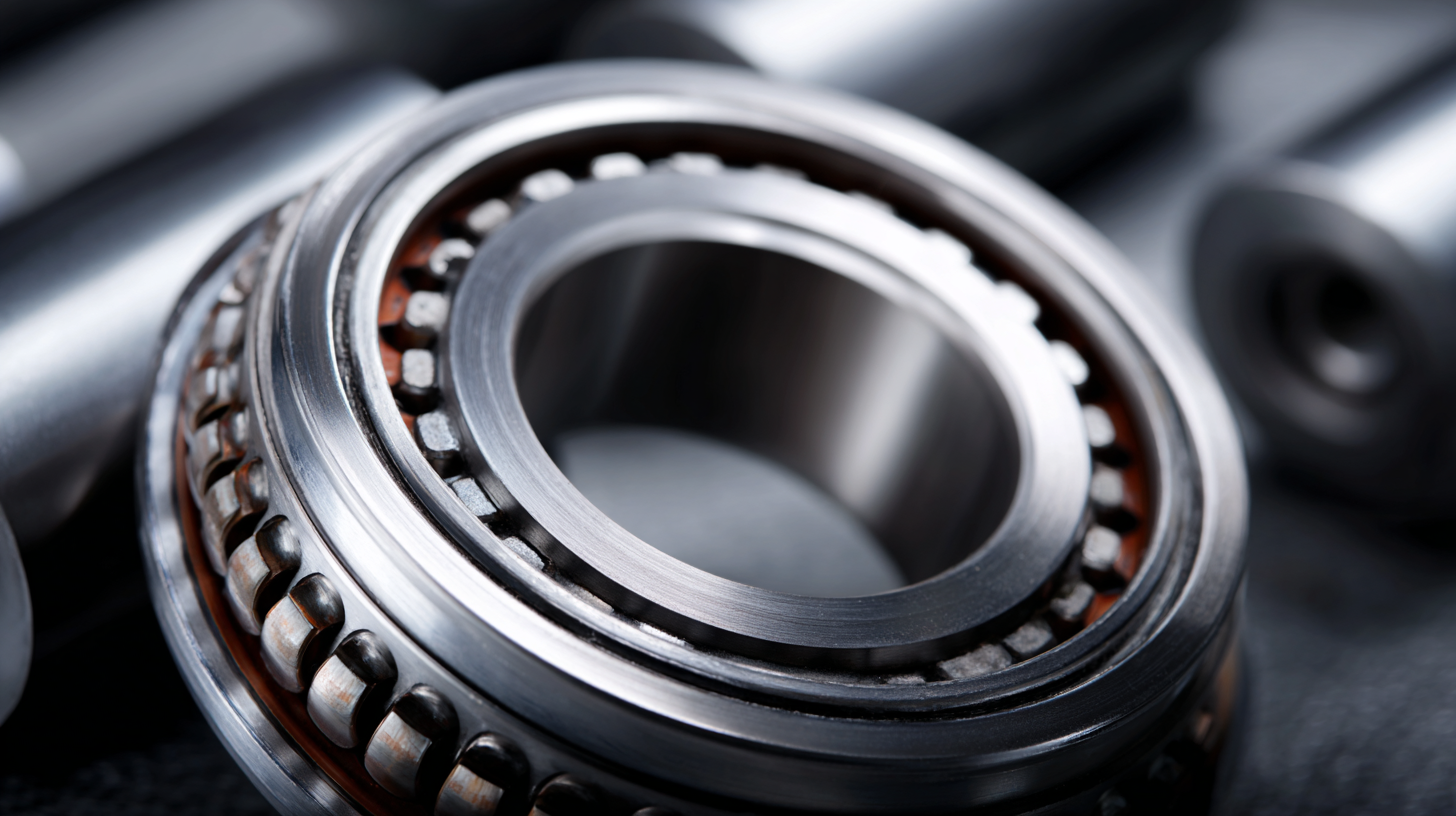 Regular maintenance is crucial for enhancing the longevity and performance of thrust roller bearings. According to a report from the American Society of Mechanical Engineers (ASME), proper lubrication can increase bearing life by up to 50%. It is essential to monitor the lubrication levels and replace the lubricant as needed, as contaminated or worn-out lubricant can lead to premature failure and increased wear on the bearing surfaces.
Regular maintenance is crucial for enhancing the longevity and performance of thrust roller bearings. According to a report from the American Society of Mechanical Engineers (ASME), proper lubrication can increase bearing life by up to 50%. It is essential to monitor the lubrication levels and replace the lubricant as needed, as contaminated or worn-out lubricant can lead to premature failure and increased wear on the bearing surfaces.
Tips: Regularly inspect the seals and shields to ensure they are intact and functioning correctly. This helps to prevent dirt and moisture ingress, which can compromise the bearing's performance. Additionally, keeping the operating temperature within the recommended range is vital. Excessive heat can result in thermal degradation of the lubricant and the bearing materials themselves.
Consistent monitoring of operating conditions can further optimize thrust roller bearing performance. Industry data shows that maintaining optimal load conditions can prevent overloading, which often leads to bearing failure. Implementing condition monitoring techniques, such as vibration analysis and temperature measurements, can provide insights into the bearing's health, allowing for timely interventions before serious issues arise.
Troubleshooting Common Issues with Thrust Roller Bearings
Thrust roller bearings are essential components in various machinery, providing support for axial loads. However, common issues can arise, affecting their performance. One prevalent problem is misalignment, which may result from improper installation or wear over time. Misalignment can lead to uneven load distribution, causing excessive wear and potentially leading to bearing failure. Regular alignment checks and adjustments can mitigate this issue, ensuring that the bearing operates smoothly and efficiently.
Another frequent challenge is lubrication failure, which can cause overheating and increased friction. It's vital to use the appropriate lubricant and maintain a regular lubrication schedule tailored to the operating conditions. Inadequate lubrication can lead to premature wear, while over-lubrication can create excess heat and pressure buildup. Monitoring the bearing’s operating temperature and periodically inspecting the lubrication system can help identify potential problems early and maintain optimal bearing performance.
Lastly, contamination from dirt or debris can significantly affect thrust roller bearings. This can be prevented by ensuring proper sealing and employing filtration methods. Regular maintenance, including cleaning and inspections, is crucial to detect any signs of contamination. By addressing these common issues proactively, the performance and longevity of thrust roller bearings can be greatly enhanced.




 Regular maintenance is crucial for enhancing the longevity and performance of thrust roller bearings. According to a report from the American Society of Mechanical Engineers (ASME), proper lubrication can increase bearing life by up to
Regular maintenance is crucial for enhancing the longevity and performance of thrust roller bearings. According to a report from the American Society of Mechanical Engineers (ASME), proper lubrication can increase bearing life by up to 